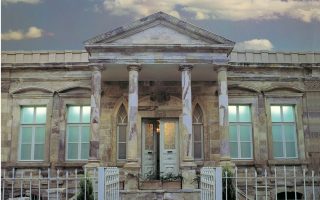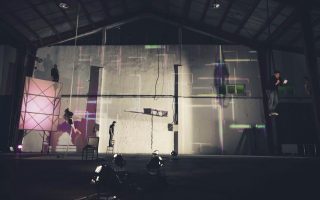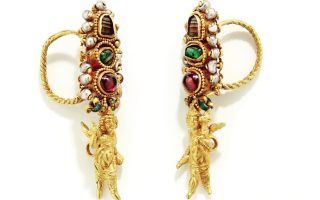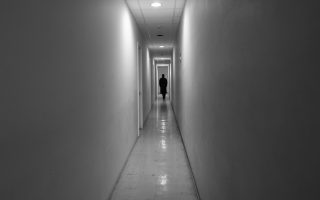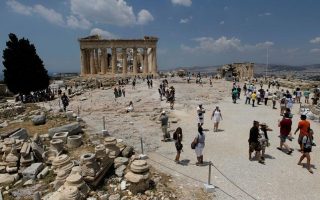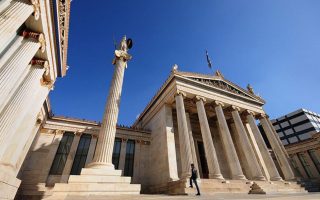A guardian of Syria’s imperiled cultural heritage
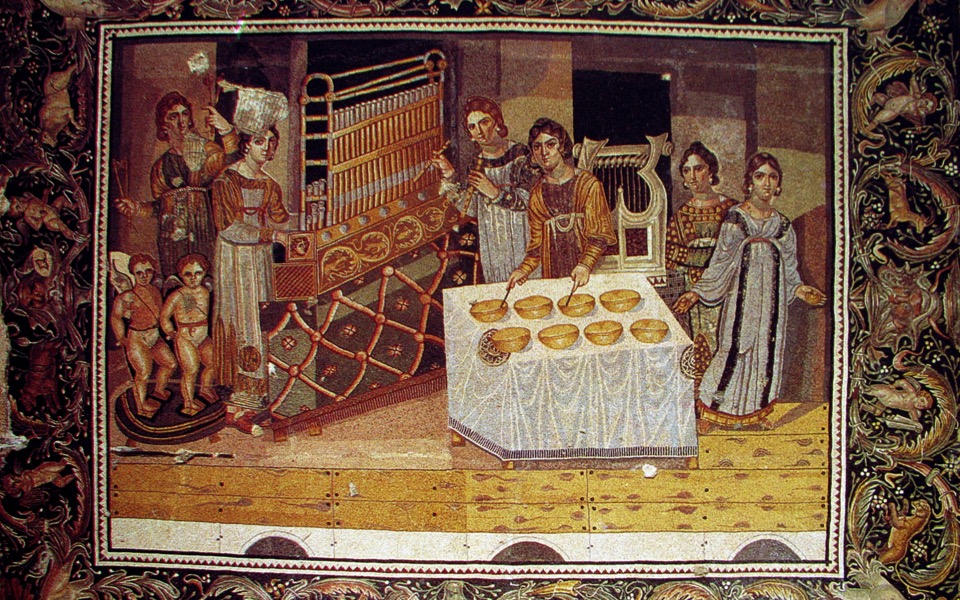
Almost a decade has gone by since the first group of postgraduate students from the University of Damascus came under the guidance of Greek scientists from the European Center of Byzantine and Post-Byzantine Monuments (EKBMM) in Thessaloniki to study and document splendid mosaic floors from the Early Christian period at the Syrian capital’s National Museum.
The study of the Syrian mosaics was one of the first training programs in the Middle Eastern country run by EKBMM, which took on the painstaking task of documenting hundreds of slabs of relocated mosaics with Greek inscriptions using advanced scientific methods.
At the time, the field of mosaic conservation and documentation was still very much in a nascent phase both at the University of Damascus and at Syria’s museums, and digital archiving – made possible thanks to the donation of electronic equipment by EKBMM – gradually replaced the antiquated system of index cards. It was an ambitious initiative that was moving apace until the sirens of war brought it all to a halt in 2011. EKBMM was forced to stop all of its education programs, and archaeologists and conservators scattered to other parts of the country or to Europe.
The images and reports that were broadcast to the world over the internet shocked the international archaeological community: monuments and sites being razed by relentless targeted bombings and museums – among them those of Hama and Apamea – being smashed and looted. The Maarat al-Numan Mosaics Museum in Idlib province became a military headquarters for the Syrian army and images of its central courtyard covered in debris from months of shelling doused hopes that an effort to transfer its amazing collection to safety had been successful.
It is still impossible to calculate the exact magnitude of the destruction as the war continues to rage. What we do know is that once it stops, it will not just have cost thousands of lives and caused millions of displacements, it will also have obliterated an important part of world cultural heritage. And it is here that Greece can provide valuable information on at least a part of Syria’s archaeological wealth, as the EKBMM database contains photographs of and details about 365 mosaic floors. The catalog may not be complete – the war stopped the documentation process and the Damascus University database may have been destroyed – but it does have all of the information that EKBMM managed to collect while there. This database may also prove a valuable tool for international authorities in the crackdown on the illegal trade of antiquities from Syria.
The catalog consists exclusively of masterpieces from the Early Christian period (4th-7th century) from the huge treasure of 3,000 square meters of mosaic floors removed from their initial sites to museums and storage areas in Syria. But how did the Thessaloniki center become involved?
It all started about 20 years ago when Athens University Professor Nikos Zias, until recently president of EKBMM, thought of starting a center that would be independent and financially flexible and which could manage funds from multiple sources. The idea was prompted by successive requests to the Greek Ministry of Culture for “financial assistance and know-how for conserving and managing Byzantine and post-Byzantine monuments and works that were being managed by state entities and foundations both in the Middle East and in the Balkans and Black Sea regions, which in the mid-1990s were going though a painful adaptation to new policies and economic structures,” explains current EKBMM director Anastasia Tourta. Tourta is also one of the founding chiefs of Thessaloniki’s Museum of Byzantine Culture, awarded by the Council of Europe in 2005.
The center went on to forge bilateral agreements in the Middle East and the Balkans (Syria, Jordan, Israel, Albania, Bulgaria, Turkey, Serbia and Italy) and to conduct dozens of projects.
Syria was one of the first countries in which EKBMM provided know-how, following a request in 2003 for assistance in modernizing mosaic cataloging and conservation methods from the Syrian General Directorate of Antiquities and Museums and the Archaeology Department of the University of Damascus.
The Syrian Mosaic Pavement Documentation project, which was signed in 2005, foresaw the full documentation of the country’s floor mosaics and annual education programs for Syrian postgraduate students to help them keep abreast of technological developments.
“The ultimate objective of the program was to create a corpus that would constitute the basis for future analyses and studies,” says Tourta.
Training Syrian conservators was key to the success of the endeavor, so EKBMM put together a specialized and fully equipped lab at the Mosaic Museum in Hama, central Syria. Attendance at its classes surpassed all expectations.
“What EKBMM does is effectively cultural diplomacy,” says Tourta. “Its work is complex and especially demanding, as it is carried out in difficult areas and often under dangerous conditions. It takes knowledge of the historical and political context of the area, the character and language of its people, striking fine balances and exercising tact, patience and persistence. The vision and the work of the center’s members and associates – which is practically on a voluntary basis – overcomes any obstacle. I hope that we have made some small contribution to preserving the memory of dear, hurt – hopefully not irreparably – Syria.”
Priceless treasure
Syria’s mosaic floors are among the finest samples salvaged in the Eastern Mediterranean, Aristotle University of Thessaloniki Archaeology Professor Emeritus Giota Asimakopoulou-Atzaka tells Kathimerini as she scans through the digital album of these masterpieces.
“A huge number that has been discovered in Syria had filled the archaeological museums of Damascus, Apamea, Hama, Aleppo and Maarat al-Numan, forming amazing galleries of works that are still not found in the bibliography,” she says.
Greek mythology was a dominant theme in the Roman era. Colorful and complex geometrical compositions adorned the floors of churches and other buildings from the mid-4th century through the 5th century, until the prevalence of Christianity. The animal and plant kingdom, meanwhile, as befitting the mores imposed by Christianity, became more dominant from the mid-5th century until the late 7th century.
“Looking at these photographs, behind the colors, behind the smooth harmonious lines and scenes that celebrate life, I cannot but be gripped by a sense of sadness, by the dark veil of irrational barbarity that for years has been destroying works of art and human life,” says the professor. “I would like to believe that the information about the destruction and looting is not fully confirmed and that the situation is not as dire as we think.”
